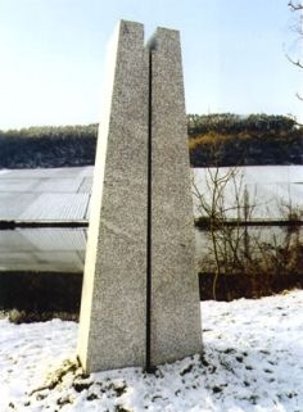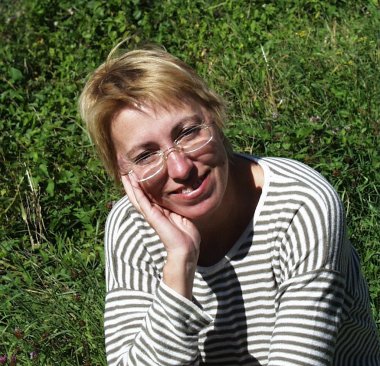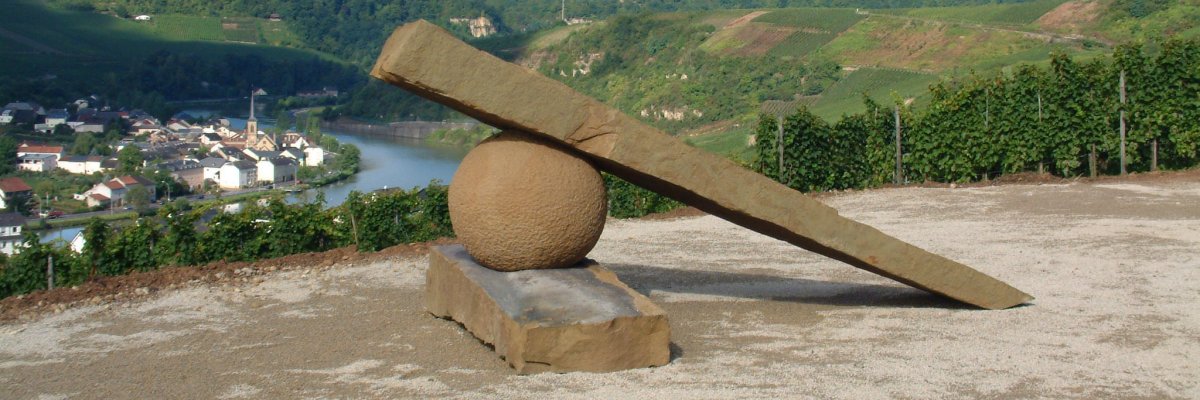"waypoint"
by Martine Andernach
 | The artist about her work: Came from Sardinia |

The end: Stones by the River by Dr. Baerbel Schulte
The austere sculpture "Waymark" by Martin Andernach consists of the same material as Willi Bauer's "zeichen", a light granite from Sardinia. Rising high and emphasizing the vertical, it contrasts with the broad river, forming the opposite pole. Similar to how one sometimes squints one's eyes or uses one's hand like a telescope in order to be able to see essential things more clearly, a narrow slit between the two pushed together elements enables a new view of the river and the landscape behind it. However, this effect only occurs when the viewer is standing in front of the work. The sculpture, which appears rather blocky from the side, changes its effect depending on the point of view. The viewer has to become active, dissolve the blocky through his movement. In its concentration, its no-frills austerity, its simple, elegant standing without sweeping, hectic gestures, this sculpture poses questions to the viewer, questions about permanence, about slow being, whose poignancy one can hardly escape.
Biography:
1948 born in Rang du Fliers, France, childhood and youth in Paris. In Germany since 1969, marriage, two children. 1978-1982 studied sculpture at the art college in Cologne with H.K. Burgeff and Daniel Spoerri. 1984 Burgundy scholarship from the Rhineland-Palatinate Ministry of Education. 1989 Lincoln scholarship from the Rhineland-Palatinate Ministry of Education. 1993 Symposium Kandel, Sculpture Route Rhineland-Palatinate. 1999 Symposium, Hagenbach / Lauterbourg. Since 1991 lecturer at the Trier Summer Academy. 1999 Gallery Rehberg Mainz, Fritz Winter House Ahlen. 2000 Rothe Gallery Frankfurt a. M., Fritz Winter Atelier Diessen.
